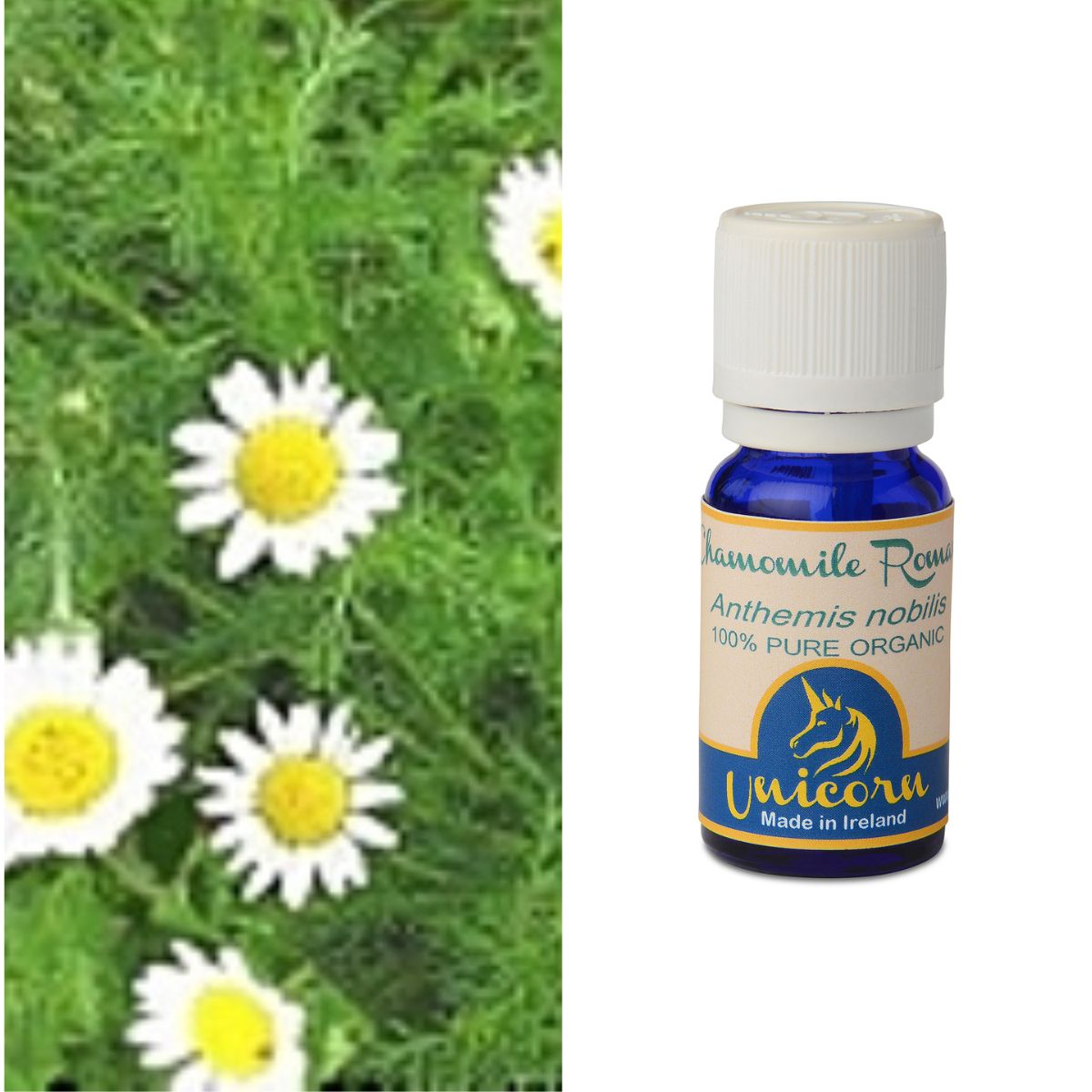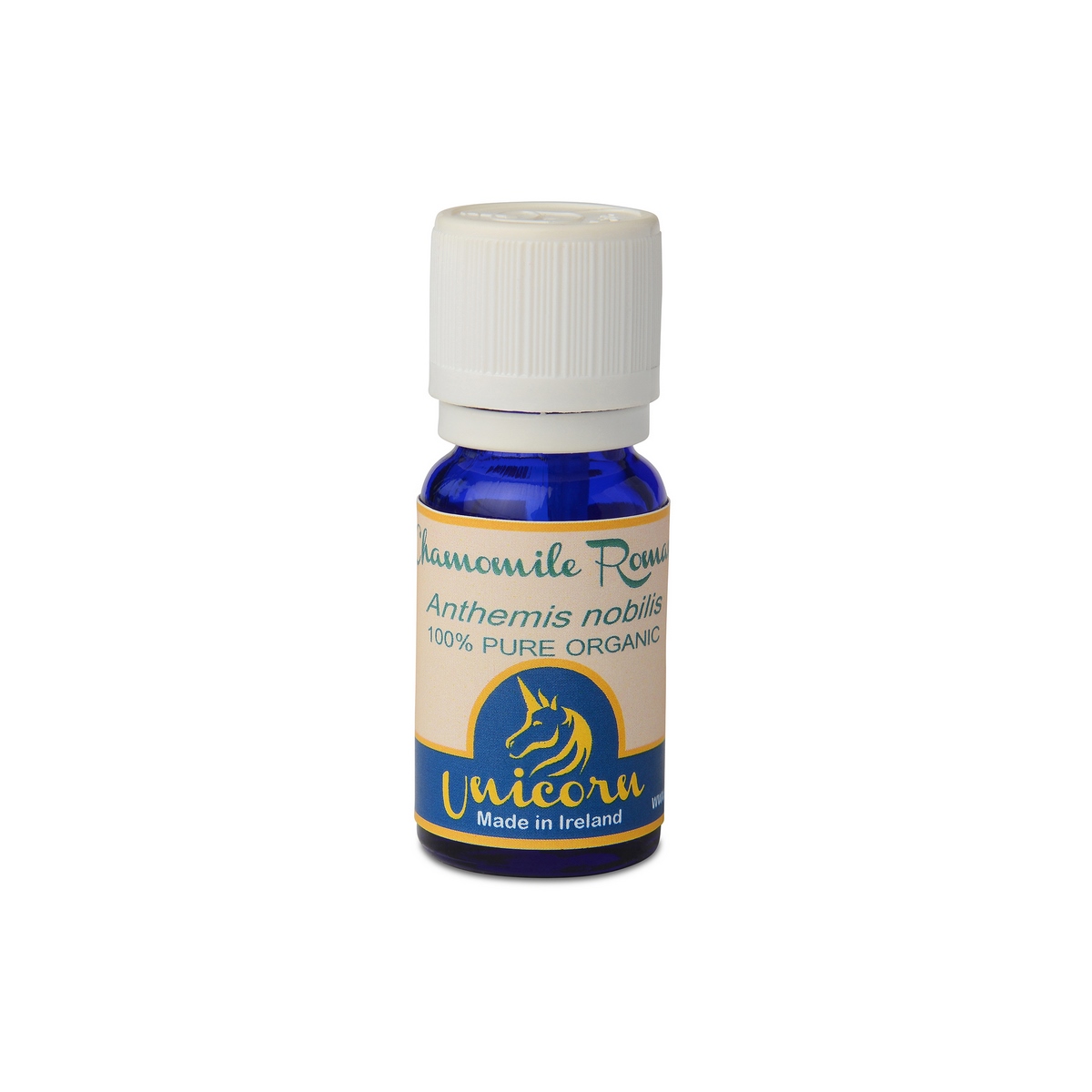CHAMOMILE Roman (Flowers) Athemenis nobilis.
Chamomile Roman essential oil has a sweet, spicy fragrance and is very light clear blue in colour. Useful for relaxing blends and gentle with the elderly and children.
Both Roman and German chamomile have excellent calming properties, but Roman Chamomile is more effective for effect on children when they feel irritable, impatient, teething or colicky.
Women find it great to relieve PMS. In general it is good for abdominal pain, gall bladder problems, as well as for throat infections, furthermore it helps to relieve allergies, hay fever and asthma.
This essential oil (when diluted) can be used with great effect on the skin, it is heralded for it’s anti-inflammatory properties and can be used to calm acne, eczema, rashes, wounds, dermatitis, dry and itchy skin and other allergic conditions in general.
For babies (over 6 months) it can be used in a very diluted form to sooth an irritated and teething baby and helps for colic, diarrhoea and gastric spasms.
Chamomile Roman blends well with
Both chamomiles blend well with Bergamot, Clary Sage, Geranium, Grapefruit, Jasmine, Lavender, Lemon, Rose, Tea tree and Ylang Ylang
Therapeutic properties
The therapeutic properties of Chamomile Roman oil are analgesic, anti-spasmodic, antiseptic, antibiotic, anti-inflammatory, anti-infectious, anti-depressant, anti-neuralgic, antiphlogistic, antiseptic, antispasmodic, bactericidal, carminative, cholagogue, cicatrisant, emmenagogue, febrifuge, hepatic, sedative, nervine, digestive, tonic, sudorific, stomachic, vermifuge and vulnerary.
Therapeutic properties explained
Extraction
Our Chamomile Roman is extracted from the flowers by steam distillation, with the Roman chamomile yielding about 1.7 % from fresh flowers.
Chemical composition
The main chemical components of Chamomile roman oil are a-pinene, camphene, b-pinene, sabinene, myrcene, 1,8-cineole, y-terpinene, caryophyllene, and propyl angelate and butyl angelate.
Precautions
Both types of chamomile oil are considered non-toxic and non-irritant, yet since they do have emmenagogue properties when used in high concentrations, they should be avoided during pregnancy.




